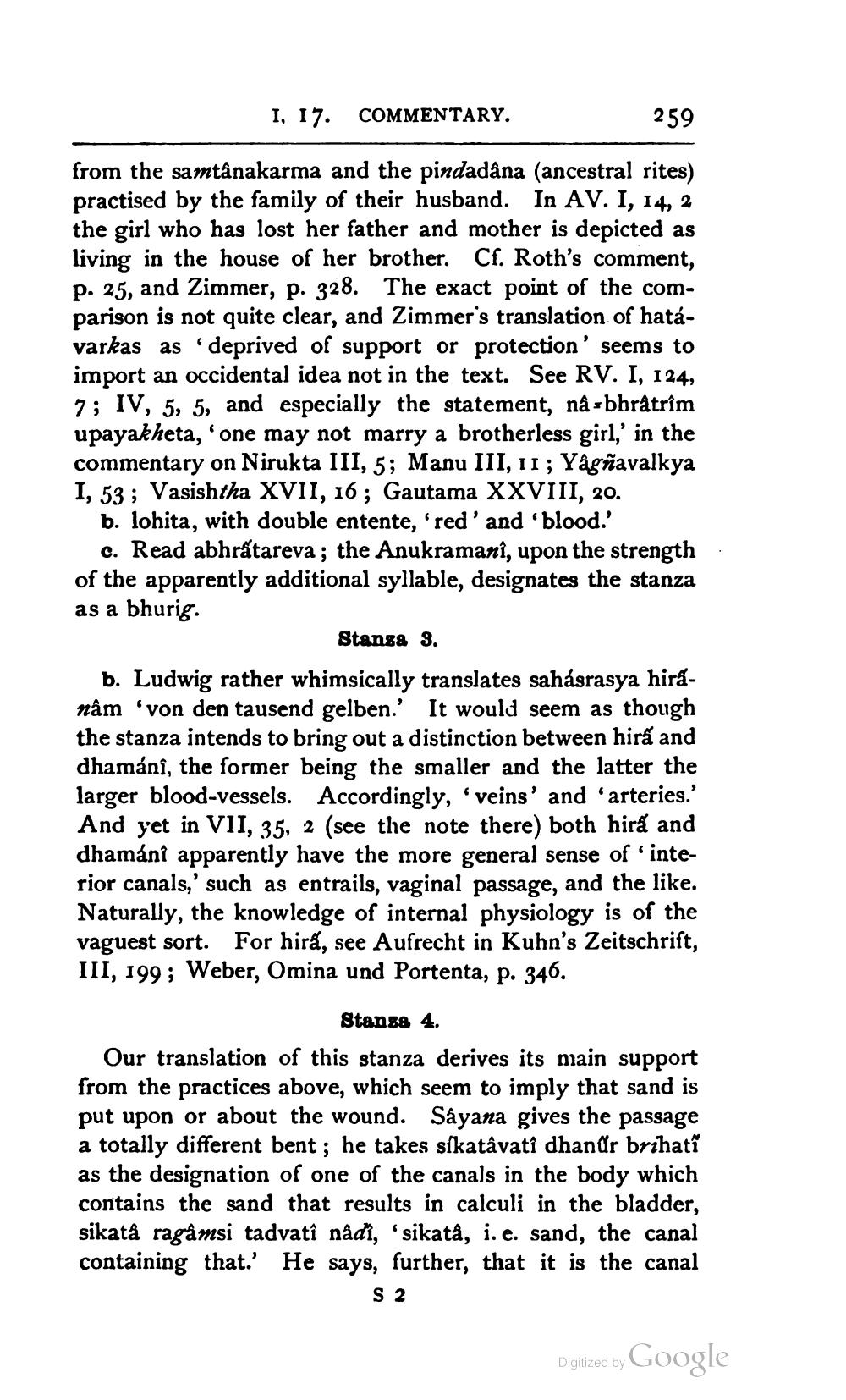________________
I, 17. COMMENTARY.
259
from the samtânakarma and the pindadâna (ancestral rites) practised by the family of their husband. In AV. I, 14, 2 the girl who has lost her father and mother is depicted as living in the house of her brother. Cf. Roth's comment, p. 25, and Zimmer, p. 328. The exact point of the comparison is not quite clear, and Zimmer's translation of hatávarkas as 'deprived of support or protection' seems to import an occidental idea not in the text. See RV. I, 124, 7; IV, 5, 5, and especially the statement, nâ sbhràtrîm upayakheta, 'one may not marry a brotherless girl,' in the commentary on Nirukta III, 5; Manu III, 11; Yâgñavalkya 1, 53 ; Vasishtha XVII, 16 ; Gautama XXVIII, 20.
b. lohita, with double entente, 'red' and 'blood.'
c. Read abhrátareva ; the Anukramanî, upon the strength of the apparently additional syllable, designates the stanza as a bhurig.
Stansa 3. b. Ludwig rather whimsically translates sahásrasya hiranâm 'von den tausend gelben.' It would seem as though the stanza intends to bring out a distinction between hirã and dhamánî, the former being the smaller and the latter the larger blood vessels. Accordingly, 'veins' and 'arteries.' And yet in VII, 35, 2 (see the note there) both hira and dhamáni apparently have the more general sense of 'interior canals,' such as entrails, vaginal passage, and the like. Naturally, the knowledge of internal physiology is of the vaguest sort. For hira, see Aufrecht in Kuhn's Zeitschrift, III, 199; Weber, Omina und Portenta, p. 346.
Stanse 4. Our translation of this stanza derives its main support from the practices above, which seem to imply that sand is put upon or about the wound. Såyana gives the passage a totally different bent; he takes síkatávatî dhanur brihati as the designation of one of the canals in the body which contains the sand that results in calculi in the bladder, sikatå ragâmsi tadvatî nâdî, 'sikata, i.e. sand, the canal containing that.' He says, further, that it is the canal
S 2
Digitized by Google




